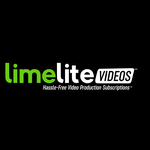How to Prepare for a Video Shoot
 Updated
by LimeLiteVideos
Updated
by LimeLiteVideos
It All Starts With Communication
Communication is huge for preparing for your video shoot. You should inform the entire staff, even those not on location about the date, time, location, and importance of the production. This will elevate the final results of your video.
We want all your videos to be perfect! Make sure your people know where to be, what to wear, what’s expected of them, and by preparing your workplace with the following tips and tricks.
Selecting your space
More often than not, your video will include footage of your office/workspace, so choose a location that shows your company in the best light.
We typically recommend selecting a room that has plenty of natural light and space to move around. Natural light helps give a warm, natural, and welcoming feel. Try to avoid overly clinical surroundings, though, as these can appear formal and stifling.
What you want is:
- A location that is calming and uplifting
- Little clutter, as this will distract your viewers
- A location (and props, if desired) that reflect your brand
For interviews - long, deep rooms are preferred because they leave enough contrast between the subject (the person talking, who is in focus) and the background (which is soft and out of focus). Avoid distracting objects in the background, noisy areas, busy hallways, and overhead fluorescent lights or anything that sits directly above the subject (as these will cast unflattering shadows). The room chosen should be quiet on your shooting day/s, so you won’t be interrupted by ringing phones, traffic, noisy air vents, or any other sounds that could interfere with the audio.

Make sure everything in the space is clean and organized. Sweep, mop, and consider having the windows washed; especially if you have glass dividers in your space. Ensure there are no logos or branding of other companies you don’t want to be shown.
Using Props
Props are a great way to add substance to your video. When we capture footage that is not an interview (B-Roll), it looks best when they are using and holding the objects they normally would be. For example, an employee walking with a client through your office can be a really powerful image. Adding props such as a tablet or notepad increases the authenticity.
Make sure all equipment we will be highlighting is operational as well. For example, if we are capturing footage of a sales or team presentation but the computer or projector isn’t working and you have to shoot it a dozen times it really deflates the energy of the entire production and can throw off a schedule. Trust us, we've been there.
Practice Your Lines
If your video involves a script, your on-camera talent should practice their lines. This will help them feel confident and informed about what they are saying. We have a teleprompter for them to read so there would be no need to memorize, but practicing reading and saying their lines can help with delivery.
If the on-camera talent is struggling during a candid interview; having someone ask a question in which the line would be the answer can make them feel more comfortable as if they were having a real conversation and not talking to a camera.
Keep in mind you don’t want the lines to sound forced or fake. Viewers prefer to watch people who are conversational, personable, and seem comfortable in their environment.
